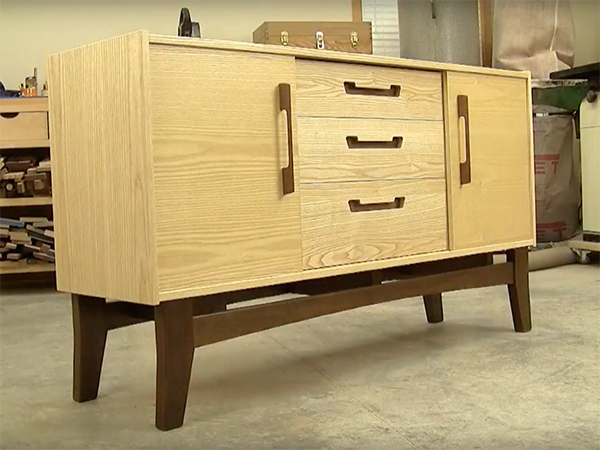
Is it ethical for a woodworker, upon seeing a piece of furniture he or she likes, to copy the design? Can you take pictures and measurements and then make it yourself?
Rick White: Everybody in the woodworking world copies from everyone else. If you’re making an exact copy, you should probably give the designer some kind of credit, but most furniture makers introduce their own design elements as they make a piece, so exact duplicates are rare. If you’re going to sell the piece as your own design, then you’re treading into unethical territory.
Ellis Walentine: For some people ? woodworking authors included ? imitation is the sincerest form of flattery. Certainly, if the designer has published the plans, he expects people to make the piece. Ethics enter the picture when you start producing someone else’s design for sale, in which case it would be appropriate to contact the owner of the copyright to see how he or she feels about your commercial use of his/her intellectual property. It’s also legitimate to design and build your own version of anything you see. Again, my only caveat would be to notify the owner if you plan to produce and market your copy of an original work.
Rob Johnstone: For me, it has to do with the end use of the piece. If you are making the piece for your personal use, then I do not think there is any real problem. In that case, imitation is indeed the truest form of flattery. If you are copying a unique design and selling it for profit, then, in my opinion, you have crossed the line. In that case, as they say on my favorite TV show, ‘Law and Order,’ it all boils down to intent. It is almost impossible for creative people not to be influenced by the designs they see and find beautiful. But to go out and take measured drawings of a specific project and then build to match without the designer’s permission … that is unethical. The question becomes more complex when it involves really well known designers who have now passed on. If I build a Ruhlman inspired piece, am I paying homage to him or stealing his vision and design? It all boils down to intent.
Ian Kirby: Is it ethical? If you think so. We call it ‘me too’ in this industry, and it’s done all the time. Take pictures, measurements … whatever. But, why not use it as an inspiration to design your own piece? Woodworking is like that.
Michael Dresdner: A lot depends on the piece and your intentions. If it is a new design that someone is marketing as a personal expression of his or her artistry in wood, I’d certainly ask them before copying it. I suspect it would matter to them whether you were doing it as an homage, perhaps to sit in your home, or copying it in order to outproduce and undersell the original in the marketplace. Time (and death) has an influence, too – I think we can safely say it is all right to copy Hepplewhite and Sheraton pieces…





